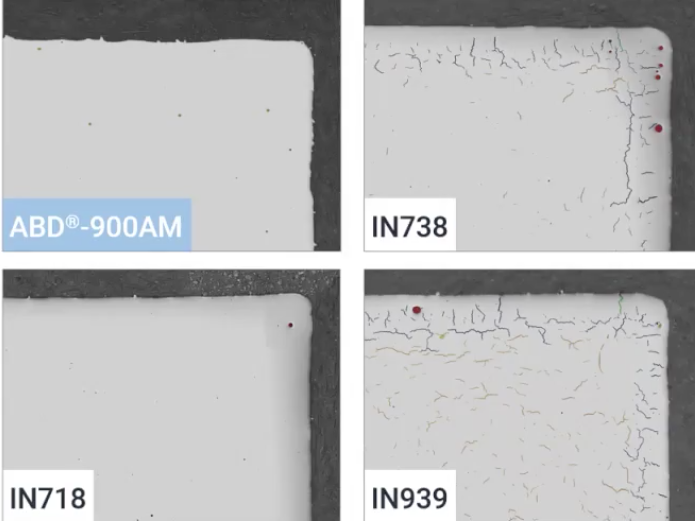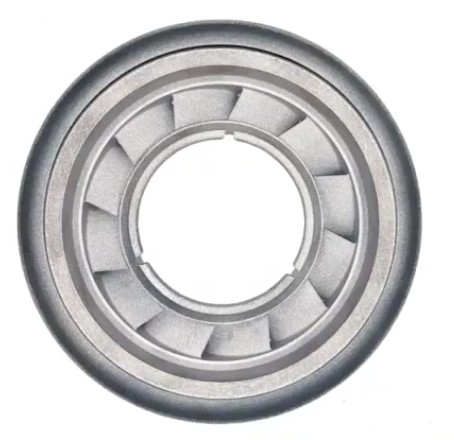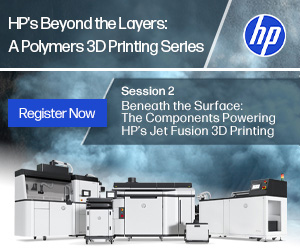In past decades, additive manufacturing (AM) technologies introduced new possibilities for direct manufacturing of complex parts with costs and lead times much shorter than conventional manufacturing; however, the materials used in these process have not always been at par with the technology. Superalloys for AM (AM) have been garnering interest across various industrial sectors in recent years, from automotive to aerospace, power, and gas turbines.
The growing demand for superalloy powders designed specifically for AM led Aubert & Duval—a subsidiary of the High-Performance Alloys Division of the Eramet Group based in Paris, France—and UK-based Alloyed—formerly OxMet Technologies—to launch last year a new high-strength and high-temperature nickel alloy called ABD-900AM. After months of printing and testing prototypes and parts, the companies hosted a webinar session on July 1 to highlight the advantages of the high-performance material. During the presentation, William Dick-Cleland, additive manufacturing engineer and space lead at Alloyed, and Adeline Riou, global sales manager at Aubert & Duval, introduced participants to the design process and uses of ABD-900AM.
Starting with a deep dive into the development and production of the alloy and ending with a look into real-world examples, the panelists covered many properties of the new material and promised to share more later on and as adoption continues to move forth in different industries. Riou kicked off the webinar by outlining the meaning behind the alloy’s name: ABD stands for Alloys-by-Design, which is the name of the digital platform used by Alloyed to develop the materials, while 900 refers to the temperature capability of the alloy in degrees Celsius (1650°F).
Dick-Cleland then opened the session, stating: “For AM to reach its potential in hot-section parts, new alloys are needed. AM offers unprecedented design freedom; however, much of that design freedom is lost when the material is poorly suited for the process. Legacy Nickel alloys were developed for traditional manufacturing methods like casting or forging and as a result, there is no reason why they should be optimal or suitable for the AM process, they crack under the extreme thermal gradients, and inhibit the use of AM for critical parts.”
According to the panelist, compared to the family of traditional Inconel nickel-chromium-based superalloys, ABD-900AM increases part life and enables crack free AM in high-temperature regimes where other materials, like Inconel 718, are not viable. In fact, ABD-900AM was the first high-performance nickel alloy designed specifically for crack-free manufacture, enabling the production of complex high-temperature parts in critical applications and highly suitable for turbomachinery parts, including pistons, combustion chambers, blades and more.

ABD-900AM enables crack-free additive manufacturing when compared to Inconel materials, ideal for complex thin-walled applications. All the samples were printed with Inconel 718 parameters on a Renishaw AM400 (Image courtesy of Alloyed/Aubert & Duval)
Optimized for high creep and tensile strength, ABD-900AM is corrosion and oxidation resistant, with a working temperature range of up to 900°C in its age-hardened state.
“Right from the ground up ABD900 was designed to have the same printability as the industry-standard Inconel 718 since we did not want to sacrifice build speed or part complexity. We did experimental validations of how these two alloys compare when they are printed with a standard set of Inconel 718 parameters. The results show that ABD900 prints with great density (greater than 99.9%) and without any microcracking, which is key. So there is no need for slow built speed or post-processing. The great printability combined with advanced laser controlls allowed us to build high-resolution complex features from the alloy, such as lattices and thin walls,” said Dick-Cleland.
Alloyed claims that its ABD algorithmic platform can predict the performance of millions of different alloys simultaneously, and choose the best optimization for a particular application, cutting back on months or even years of expensive trial-and-error.

Mechanical property assessment for heat-treated alloy Inconel 718 and ABD-900AM after using laser powder bed fusion (Image courtesy of Alloyed)
The novel powder metal alloy has a very similar performance to cast Inconel 738 at high stresses, and close to cast Inconel 939 at low stresses and high temperatures. During the webinar, Dick-Cleland said that it was especially important to note that a printed material like ABD-900AM is able to directly compete and replace cast alloys, which is part of the design transition that is beginning to show in much of the gas turbine and similar industries. Additionally, he explained that at temperatures of around 760°C, nickel superalloys can be susceptible to forming intermetallic TCP phases that can be detrimental to its mechanical properties. Stressing that “while both Inconel 718 and Inconel 718+ lose their strength after high-temperature exposure, ABD-900AM is exceptionally stable.”
In addition to hearing about some of the properties of the material, attendees also learned about its uses from the perspective of companies that demand high strength materials for the development of complex high-temperature parts. Towards the end of the presentation, participants were guided through real-world examples of uses for ABD-900AM.
Riou provided insights into the design of a miniature jet pulse for model planes that was successfully additively manufactured using ABD-900AM in partnership with Volum-e, a leader in the French metal AM prototype market. The miniature prototype pulsejet engine had a longer lifetime thanks to the heat resistance of the material and was easily welded for assembly since ABD-900AM is also weldable.
For bigger parts, like a prototype turbomachinery component produced in partnership with French-based high tech supplier Safran power units and metal 3D printing product developer HiETA, in the UK, engineers were able to convert a conventionally cast component with machine features and cooling channels into one complete AM piece. Dick-Cleland emphasized that the final part was printed with great density and it was heat treated with no issues like cracking, which are common when using a cast alloy in this process.
Participants left the webinar with a comprehensive look into the fundamentals of using ABD-900AM. For decades nickel superalloys Inconel have dominated the nickel-based alloy market, and that included the metal AM segment, but we have seen novel metal compositions from leading companies specially designed for AM crop up to offer better part outcomes. With so many industries already benefiting from metal AM technology, new alloy creations optimized for high creep and tensile strength, corrosion resistance, high temperatures, and designed for metal 3D printing machines, mainly laser powder bed fusion technology, can increase design freedom, printability and empower AM technology users to create parts for the industries of the future.
Subscribe to Our Email Newsletter
Stay up-to-date on all the latest news from the 3D printing industry and receive information and offers from third party vendors.
Print Services
Upload your 3D Models and get them printed quickly and efficiently.
You May Also Like
3D Printed Flowers Light Up Jersey Zoo in Tribute to Conservation Pioneer Gerald Durrell
This summer, Jersey Zoo is home to more than just rare animals; it’s also hosting one of the most visually stunning installations this year: Bloom. This glowing field of 3D...
Polymaker Unveils HT-PLA & HT-PLA-GF Line of 3D Printing Filaments
Today, Polymaker has launched a new line of HT-PLA & HT-PLA-GF filaments. These enhanced PLA versions increase the glass transition temperature of PLA from a normal 60°C to above 130°C....
APES Unveils Vision for 3D Printed Electronics Factory
Advanced Printed Electronic Solutions (APES) is a systems integrator, 3D printing service, and consultancy partner for additively manufactured electronics. 3D printed electronics machines have been around, but a truly scalable,...
Flashforge AD5X Review: Multicolor TPU 3D Printing Made Simple
Disclosure:The AD5X was provided to me by Flashforge free of charge for the purpose of this review. I have not received any additional compensation. All opinions expressed are my own,...




































